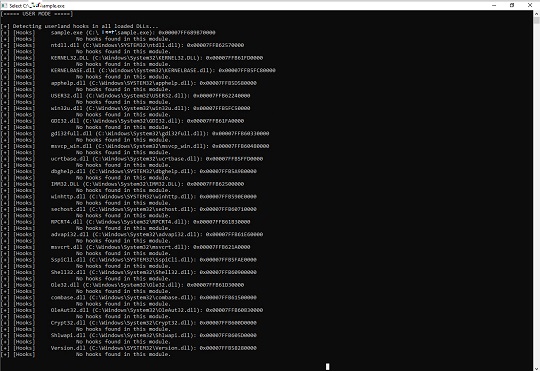HackTool.Win64.EDRSandBlast.D
Trojan.Win64.Hacktool (IKARUS)
Windows

Tipo de malware
Hacking Tool
Destructivo?
No
Cifrado
No
In the Wild:
Sí
Detalles técnicos
Instalación
Agrega los procesos siguientes:
- {Grayware File Path}\{Grayware File Name}.exe
Rutina de infiltración
Infiltra los archivos siguientes:
- {Grayware File Path}\Ntoskrnl.pdb → deleted afterwards
- {Grayware File Path}\fltMgr.pdb → deleted afterwards
- {Grayware File Path}\wdigest.pdb → deleted afterwards
- {Grayware File Path}\WNBIOS.sys → vulnerable driver
Otros detalles
Hace lo siguiente:
- It employs techniques utilized to bypass EDR detections both in user and kernel mode.
- It performs the following actions to bypass EDR detections:
- Kernel Notify Routines Callbacks Removal → by exploiting an arbitrary kernel memory read/write primitive through exploiting a vulnerable driver
- Object Callbacks Removal → by disabling the Enabled flag in the OB_CALLBACK_ENTRY structure, unlinking the CallbackList of threads and process, or disabling object callbacks through disabling the SupportsObjectCallbacks bit in the ObjectTypeFlags field
- Minifilters' Callbacks Unlinking → by scanning structures used by the Windows Filter Manager to detect callback nodes containing monitoring functions and unlink them from their lists, making them temporarily invisible from the filter manager
- Disable ETW Microsoft-Windows-Threat-Intelligence Provider → by patching in kernel memory during runtime the ETW TI provider
- Userland Hooking Bypass → by either removing the hooks, using a custom or the existing EDR's trampoline to jump over and execute the rest of the function as is, using a duplicate DLL, or using direct syscall methods
- It detects EDR drivers and processes.
- It bypasses RunAsPPL by elevating its protection level higher than the LSASS process.
- It bypasses Credential Guard by enabling Wdigest to store cleartext credentials in LSASS memory.
- It downloads symbols from the Microsoft Symbol Server for the ntoskrnl.exe, fltmgr.sys, and wdigest.dll. If a corresponding *Offsets.csv file exists, it appends the acquired offsets from the symbols to the file.
- It connects to the following URL(s) to download symbols from the Microsoft Symbol Server:
- https://{BLOCKED}icrosoft.com/download/symbols/ntkrnlmp.pdb/2E37F962D699492CAAF3F9F4E9770B1D2/ntkrnlmp.pdb
- https://{BLOCKED}crosoft.com/download/symbols/fltMgr.pdb/BDB830D5AD37A0994727A90DE1D97BA41/fltMgr.pdb
- https://{BLOCKED}crosoft.com/download/symbols/wdigest.pdb/D0FEB1356A4987BF32419D0533E05AED1/wdigest.pdb
- It checks for the presence of the following files:
- {Grayware File Path}\NtoskrnlOffsets.csv → contains offsets used to perform Offsets Retrieval
- {Grayware File Path}\FltmgrOffsets.csv → contains offsets used to perform Offsets Retrieval
- {Grayware File Path}\WdigestOffsets.csv → contains offsets used to perform Offsets Retrieval
- It conducts offset retrieval to perform kernel monitoring bypass operations.
- It checks for the existence of the following service:
- Service Name: {8 Random Characters}
- If the service above is not found, it is then created with the following details and started subsequently:
- Name: {8 Random Characters}
- Display Name: {8 Random Characters}
- Type: Driver service
- Start Type: Auto start
- Binary Path: {Grayware File Path}\WNBIOS.sys
- It reverses its routines and deletes the installed service when the command "exit" is entered on its console.
- It displays its logs on a console:

Soluciones
Step 1
Los usuarios de Windows ME y XP, antes de llevar a cabo cualquier exploración, deben comprobar que tienen desactivada la opción Restaurar sistema para permitir la exploración completa del equipo.
Step 2
Note that not all files, folders, and registry keys and entries are installed on your computer during this malware's/spyware's/grayware's execution. This may be due to incomplete installation or other operating system conditions. If you do not find the same files/folders/registry information, please proceed to the next step.
Step 3
Reiniciar en modo seguro
Step 4
Eliminar esta clave del Registro
Importante: si modifica el Registro de Windows incorrectamente, podría hacer que el sistema funcione mal de manera irreversible. Lleve a cabo este paso solo si sabe cómo hacerlo o si puede contar con ayuda de su administrador del sistema. De lo contrario, lea este artículo de Microsoft antes de modificar el Registro del equipo.
- In HKEY_LOCAL_MACHINE\SYSTEM\CurrentControlSet\services\{8 Random Characters}
Step 5
Reinicie en modo normal y explore el equipo con su producto de Trend Micro para buscar los archivos identificados como HackTool.Win64.EDRSandBlast.D En caso de que el producto de Trend Micro ya haya limpiado, eliminado o puesto en cuarentena los archivos detectados, no serán necesarios más pasos. Puede optar simplemente por eliminar los archivos en cuarentena. Consulte esta página de Base de conocimientos para obtener más información.
Step 6
Buscar y eliminar estos archivos
- {Grayware File Path}\ntoskrnl.pdb
- {Grayware File Path}\fltMgr.pdb
- {Grayware File Path}\wdigest.pdb
- {Grayware File Path}\WNBIOS.sys
- {Grayware File Path}\NtoskrnlOffsets.csv
- {Grayware File Path}\FltmgrOffsets.csv
- {Grayware File Path}\WdigestOffsets.csv
- {Grayware File Path}\ntoskrnl.pdb
- {Grayware File Path}\fltMgr.pdb
- {Grayware File Path}\wdigest.pdb
- {Grayware File Path}\WNBIOS.sys
- {Grayware File Path}\NtoskrnlOffsets.csv
- {Grayware File Path}\FltmgrOffsets.csv
- {Grayware File Path}\WdigestOffsets.csv
Step 7
Explorar el equipo con su producto de Trend Micro para eliminar los archivos detectados como HackTool.Win64.EDRSandBlast.D En caso de que el producto de Trend Micro ya haya limpiado, eliminado o puesto en cuarentena los archivos detectados, no serán necesarios más pasos. Puede optar simplemente por eliminar los archivos en cuarentena. Consulte esta página de Base de conocimientos para obtener más información.
Rellene nuestra encuesta!

